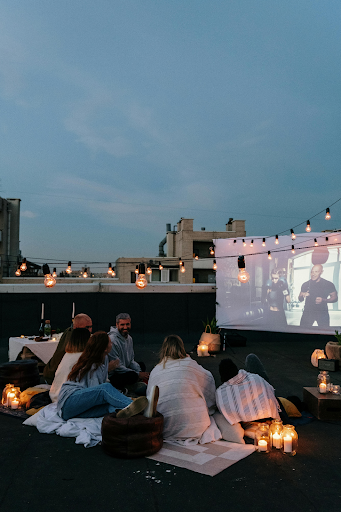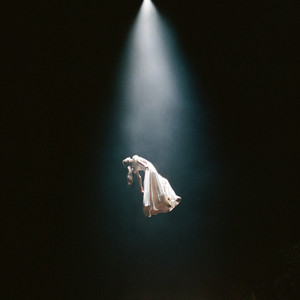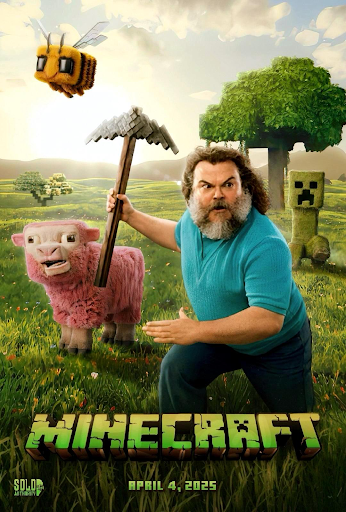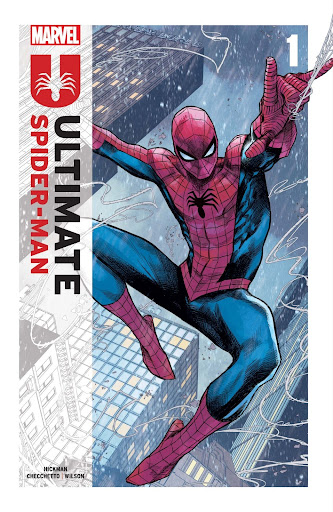‘Persona 5 Royal’ Part 2: It’s Showtime
This is part two of a three-part review series on “Persona 5 Royal.” Part one covered the game’s soundtrack. This will cover the game’s graphics, presentation, and gameplay. Part three will cover the game’s narrative.
If you missed part one or are looking for a quick and easy recommendation, “Persona 5 Royal” is one of the greatest games ever made.
It towers above all the competition with its excellent and impressive weaving of every aspect from the gameplay, soundtrack, character work, and more to form a cohesive narrative package.
A party you don’t wanna skip
Despite being made for the PlayStation 3, “Persona 5” looks absolutely stunning thanks to some absolutely stellar art design. Yes, from a fidelity standpoint, the game may be lacking but similar to “Legend of Zelda: Breath of the Wild,” this game makes up for its graphical shortcomings by being heavily stylized.
“Persona 5” is oozing with style and bravado and all that showmanship proves integral to the execution and delivery of the game’s core themes
This game takes a slightly more realistic look to its character designs compared to the other games. While conceptually they are in the same style, the character models are more proportional to real-life people which makes the transition from gameplay to the anime-inspired cutscenes a little less jarring. In the third and fourth games, characters in gameplay had somewhat big heads and pronounced features. This was mostly due to budget and hardware constraints as those games were made for the PlayStation 2.
Unlike other games in the series, the protagonist and party members all get completely new designs once you enter into the shadow world. In the third game’s “Dark Hour” and the fourth’s “TV World”, the characters just wore their normal everyday clothes but here when you enter into the “Metaverse” all the characters change into these bombastic superhero-inspired outfits, each with their own style and mask. Each of the costumes feel like perfect embodiments of their characters because they are tailor-made to fit each character’s personality.
Joker’s knife, black trench coat, red gloves, and white and black mask symbolize his status as a gentleman thief who hides in the shadows but acts with grace and finesse. Morgana’s cutlass and black cloth mask evoke a sense of a swashbuckling trickster like Zorro or Wesley from “The Princess Bride.” Ryuji sports a blunt weapon, a leather jacket, and a skull mask signifying how he is the group’s muscle but also lacks the grace and elegance of the other members. There’s even a slight Batman reference with the character, Futaba, because she has red hair and glasses and goes by the code name Oracle just like Barbara Gordon from DC Comics. This design philosophy also extends to the group’s personas, which are manifestations of one’s inner self but I’ll delve deeper into them in part three.
Each game in the series has a primary color that represents the entire game. “Persona 3” has the color blue to represent the game’s themes of mourning, despair, and death. Persona 4” utilizes the color yellow because of its themes of happiness and friendship while also representing the protagonist’s search for truth as yellow is the color of police caution tape. Likewise, “Persona 5” prominently sports the color red to represent the Phantom Thieves as a group. Red represents many things such as passion, anger, love, and rebellion which excellently mirrors the feelings and convictions of the Phantom Thieves.
The game is plastered with red all over the place from the opening music videos and character designs to the menus and dungeons. Here, red is shown as the ultimate manifestation of humanity’s passions and desires especially with red becoming an increasingly prominent color in the enormous dungeon, Mementos, which you work through throughout the entire game. It furthers the idea that our passions and desires can be a double-edged sword because on one hand they can be used for good and to improve our lives but they can also become distorted and lead us down dangerous and unhealthy paths.
In sharp contrast to this, a core staple of the series, the Velvet Room, primarily uses blue. In every game, this room physically manifests in different ways. In the third game, it’s an elevator, in the fourth it’s a limousine, and now in the fifth, it’s a prison. With red representing passion and rebellion, the blue of the Velvet Room prison represents confinement, control, and suppression which is only supported later once you reach the climax and break free from the Velvet Room which appears in your dreams.
There is also a stark contrast between bold and bright colors and the more dull and desaturated colors. The bright colors help represent the psychological liberation of the protagonists and the excitement that comes with being a Phantom Thief. When the characters are pulling off grandiose heists, the game has bold and visually stimulating colors that pop off the screen. In comparison, when you are going about everyday life, the color palette becomes duller and muted representing the world around them and how society often hides their true intentions even from themselves.
Even the menus and combat screens are stylized and unconventional. Gone are the very clean and simple menus of games past and in their places these menus have a lot of sharp edges and color choices that help make them feel more engaging and visually distinct. Most games have very flat menus that get the job done but little else. Here, however, they make each menu just as stimulating as everything else with their own transitions and animations.
This game constantly keeps itself fresh by keeping the game visually stimulating and engaging. Every aspect of the game’s art design helps to keep the player engaged while also helping to further the game’s themes. Many critics argue that all this style and bravado gets in the way of the rest of the game but I’d argue the exact opposite because it not only enhances the experience but it is key to the delivery of everything the game is trying to say and achieve. This game unapologetically wears its heart on its sleeve. It’s loud and in your face but also leaves copious room for subtlety.
Considering that this game was developed on a fraction of the budget that its peers like “Final Fantasy” get just makes it all the more impressive how it looks so much more visually appealing than other games in its genre. I wish more games would put more emphasis on style rather than realism like this because it feels like for every hyper-stylized game like this, there are 10 bland realistic games with lackluster art direction to take its place.
It’s Showtime
Gameplay-wise, this game is like a mixture of two different games. The first one is where you venture into what are called palaces to steal the hearts of evildoers while fighting a copious amount of enemies called shadows and looking stylish while doing it. The second is much slower and more down to earth. Instead of the high-octane action of the palaces, the other half of the game’s gameplay centers around just living an everyday life of a high school student in the real world.
This may sound kind of boring since half the game is doing everyday activities but trust me the stuff you do in the real world affects what you do in the metaverse’s palaces significantly. In the time between your grand heists inside people’s minds, you get to hang out with friends, work part-time jobs, study for exams, and more. In order to keep you from doing everything at once, the game has social stats which determine your ability to do certain actions throughout the world.
The five stats, knowledge, charm, guts, kindness, and proficiency, decide what you are able to do so it’s important to work towards raising them. Whether you are trying to eat the world’s largest cheeseburger, get a part-time job at a café, get a good exam grade, hit an advanced shot in pool, or simply want to strengthen your relationship with your friends, improving your social stats remains of paramount importance, you know, kinda like real life. This system makes it feel like you are constantly improving little by little.
It also makes those eventual achievements feel earned while also reinforcing the game’s narrative. It’s exciting to finally be able to complete a burger-eating challenge or hit an advanced shot in pool but it’s truly how those stats affect your interactions with other characters that matter. It feels like you truly have to put effort into some of your relationships further highlighting the importance and significance of making human connections in the story.
Speaking of human connections, your relationships with other characters, called confidants, lie at the heart of the everyday portions of the game. Gameplay-wise strengthening relationships provide benefits within palaces that can either minorly or majorly help. For example, there’s a shogi, Japanese chess, player who teaches you the ability to swap out party members mid-battle which can completely change how you play the game by making it much easier to adapt to different situations.
Each confidant has 10 ranks and each rank provides a new scene where you learn more about the character and gain a deeper connection to them. This is the most engaging aspect of the gameplay in the everyday sections because it having these conversations with these characters helps give a deeper connection to the characters and setting in a way that couldn’t be done in a traditional linear narrative format.
Just know though that this portion of the game requires a LOT of reading. Besides the rank 10 conversations, none of the support conversations are voice acted so you will be reading a lot of text in these scenes. You do get used to it because these scenes aren’t too long but for some, it may be an issue. I will say however that I found it somewhat disappointing that with all the additions of the “Royal” edition, they didn’t give full voice acting to these conversations. You’re already interacting with many of these characters for over 120 hours so they definitely could have afforded to bring just a little more life to these conversations.
The game operates on a calendar system so you only have a limited amount of time to do what you want and, unless you follow an extremely arduous and specific guide from the internet, you will not have enough time to do everything. Because of this, you have to carefully pick and choose how you use your time. Adding another layer to this social simulator, you can only do certain things on certain days. Not everyone is available at your beck and call and some days require you to advance the plot. You have to think and plan ahead a bit about what you will do.
The game spans the course of a year and the plot moves forward regardless of what you do, unlike other games where the player decides when to advance the plot. This makes the game feel a lot more down-to-earth and realistic because you are quickly slapped with the fact that you can’t do everything.
I know a lot of people may think all these social simulator aspects just sound boring and tedious but they are actually really fun and engaging. It provides a copious amount of layers and depth to the game’s world and story while being just goofy enough that it doesn’t completely feel like real life (seriously, you stuff a talking cat into your desk at school).
The other half of the “Persona 5” gameplay experience is just as engaging but also much louder and in your face. Exploring palaces provides an entirely different experience from the day to day activities. It’s bold, it’s colorful, and it’s exciting. Just like the everyday stuff, there are numerous layers to exploring palaces.
Each palace is the manifestation of someone’s distorted desires and at the core of each palace lies a treasure that represents the source of those desires so it is up to you and the rest of the Phantom Thieves to steal the treasure and “take their heart” in the process. This premise helps to differentiate the game from a lot of other RPGs because it’s not just a normal dungeon where you just randomly get attacked by enemies every which way. Instead, there is a level of strategy even outside of combat that you have to employ because this is a heist, not a grand quest to save the princess.
This aspect is significantly improved from prior games as in the third and fourth games dungeons were randomly generated in terms of their layouts and your main goal was to get to the stairs to the next floor. Here, however, palaces are handcrafted and meticulously designed which makes each palace feel less repetitive than in prior games. As much as I loved “Persona 4” the dungeons overstay their welcome because they all are practically the same with a new coat of paint each time. I think your level design has a problem when the primary determining factor on whether people like it is the music that plays.
These hand-crafted levels also allow you to better interact with your environment and engage with it on a more intimate level than you would have otherwise. Here, you have to solve puzzles, traverse different locales, and use the environment to your advantage which makes the non-combat sections significantly more fun and engaging while also allowing you to engage with the actual level on a deeper level both gameplay-wise and storywise. Here you actually learn about how and why these people with twisted desires think the way they do and while that was present in previous games, all of that was front-loaded on the final boss in each dungeon instead of interspersing it throughout the level.
The palaces are (mostly) beautiful and excellently designed with each one having context-appropriate puzzles and level design. I will say, however, the fifth palace is absolutely awful. Story-wise it’s the worst part of the game and even with the significant improvements from “Royal” this palace is still designed like a flaming turd. It’s ugly, annoying to navigate, and it has the worst music track in the game.
The cherry on top is that the final boss of this palace is horrendous. I do not exaggerate when I say that it may be the worst-designed boss I have ever encountered in a video game. Every other boss is fantastic and unique but this one is just boring as you are forced to fight enemies you already fought throughout the palace. Even worse is that you have to defeat each wave in the same turn and you have only two turns to beat them before they self-destruct and you have to start over. Oh, and did I mention there’s a 30-minute timer? You know a boss is horribly designed when it is not only significantly easier to beat it on the hardest difficulty but it’s the only viable way to beat it unless you are a seasoned veteran. This dreadful excuse for a palace is thankfully followed by the best palace of the original game so the misery kind of balances out.
I’ll delve a little deeper into the palaces and their rulers and what they represent in part three with the narrative but from a design standpoint, they are excellent.
Alongside these palaces is this place called mementos which is the “people’s palace.” Basically, it represents the distorted desires of the wider public and you incrementally explore and uncover its secrets throughout the entire game. It’s an ever-looming thread that you know you’ll have to tackle eventually. To be honest this is also a relatively weak part of the game because the entire place has randomly generated floors like the other games so I’d honestly recommend ignoring it for the most part until you are about halfway through the game and can mow your way through the place without any significant grinding. It’s definitely one of the most arduous and tedious parts of the game so I’d recommend just listening to a podcast or something while exploring this area.
I’ll be honest, the reason I was so reluctant to play this game was because it has turn-based combat. I’ve never really enjoyed or liked this kind of combat because I always found it annoyingly luck based and arduous. To me, it always felt like I was just picking which little cutscene would play rather than engaging in the combat on a deeper level. Here, however, combat is not only bearable, but it’s absolutely fantastic. It’s quick, snappy, and satisfying and avoids many common pitfalls of traditional turn-based combat. While there is an element of randomness here, combat feels much more strategic and tactical than other games
Before engaging in battles though, you have to be careful in how you approach enemies outside of combat. If they see you and land the first hit, then all enemies will get to attack first. If you hit them first then it will be a tossup. Finally, you have the ability to ambush enemies which gives you the first turn in combat. Because of this, it’s important to ambush enemies as much as possible so you can preserve both your health and stamina.
While in combat, you have a variety of options to employ, you can use your melee weapon to attack enemies, shoot them with a gun, and most effectively you can use your persona. Each party member has a different arsenal of weapons and personas tailor-made to fit their personalities. The personas are definitely the stars of the show here because they have the most effective abilities but they also can consume both stamina and health so you have to pace yourself somewhat so you don’t run out of stamina too quickly in battle, leaving you unable to progress in the dungeon for the rest of that day.
The combat also significantly reduces the amount of time you spend sifting through menus to pick an attack by having excellent UI that makes it quick and easy to access what you need. Combat is less based on just whittling down an enemy’s health bar and is more about exploiting enemy weaknesses. When you hit a weakness, the enemy gets knocked down and if you knock down every enemy in a single turn your party will point their guns at them and initiate a hold-up where you can demand money, items, or for them to join you as a persona.

Alternatively, you can do an all-out attack which is just the perfect amalgamation of this game’s overwhelmingly awesome style. Despite doing it hundreds of times at this point, doing all-out attacks just never gets old and the victory screens that pop up at the end of them for the character that initiated the attack look stunning. You could do a frame-by-frame breakdown of just the all-out attacks because so much goes into these attacks with a painstaking amount of detail to the point where they even give each character unique animations throughout to give it a more fluid feel.
As I said before, the personas are the key to the game’s combat. They are essentially Pokèmon but one, they look cooler, and two, they are manifestations of a wide variety of mythological creatures and famous literary characters. From the Norse gods such as Thor, Loki, Freya, Surtur, and Odin to 19th-century literary characters like Arsène Lupin, the game has a wide variety of personas for you to attain, they even included the four archangels from Christianity.
While every party member has a persona to use, the protagonist, Joker, is the only character who can use multiple of them since he possesses the power of the wildcard, making him your most versatile and important member. Like every game in the series, the velvet room serves as your hub for all things related to your personas. Here you can fuse different personas to get more powerful ones. This is a key area where the confidant ranks come in because each one is meant to represent a different tarot card from the major arcana and each persona is also assigned to a different card. When you fuse personas your rank with the corresponding confidant will determine how powerful that persona will be. If you are at rank 10 with that person then you will get an extraordinary amount of power for that persona and if you haven’t even started that confidant, you won’t get any extra power.
All in all, the gameplay in “Persona 5” is incredible and it somehow manages to stay consistently engaging across its 120-hour run time. It also reinforces many of the game’s themes of identity by donning different masks just like the Phantom Thieves. The more mundane everyday sections also make exploring the palaces all the more exciting because the game builds a tangible connection between you and its world through its gameplay which helps highlight the levity and importance of your mission. These two radically different gameplay styles somehow complement each other so well that the transition between them not only feels seamless but it feels earned.








